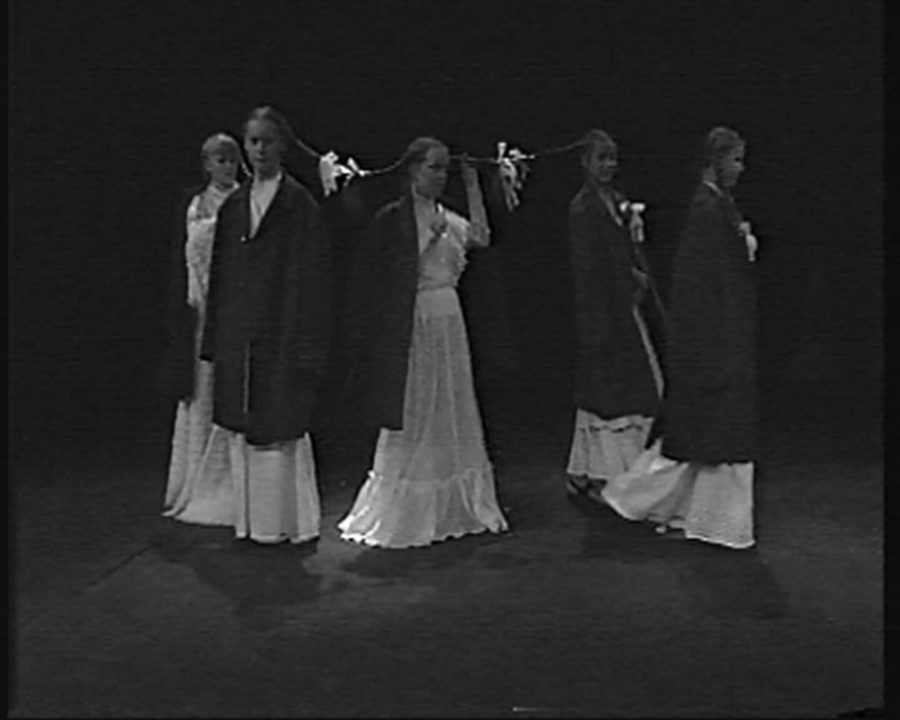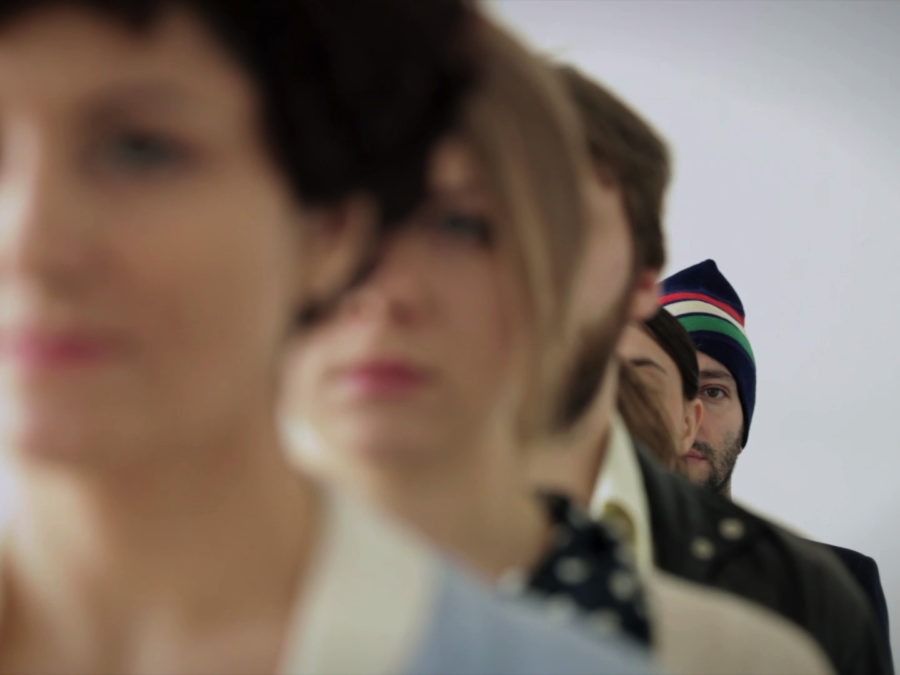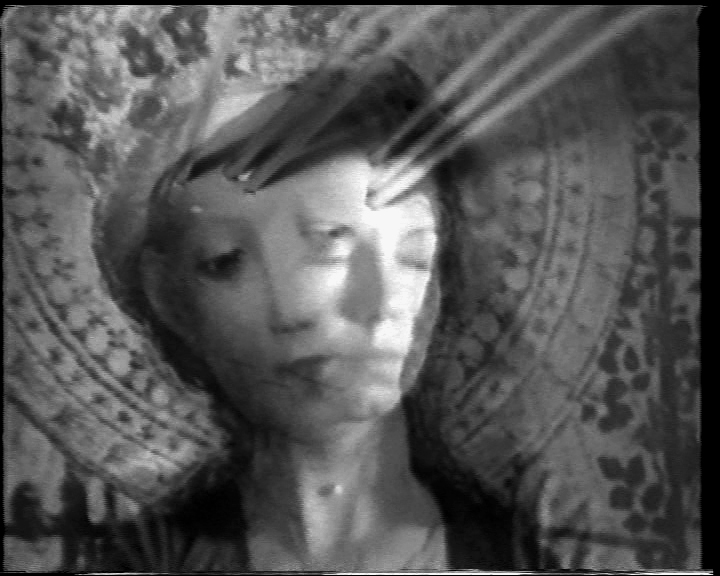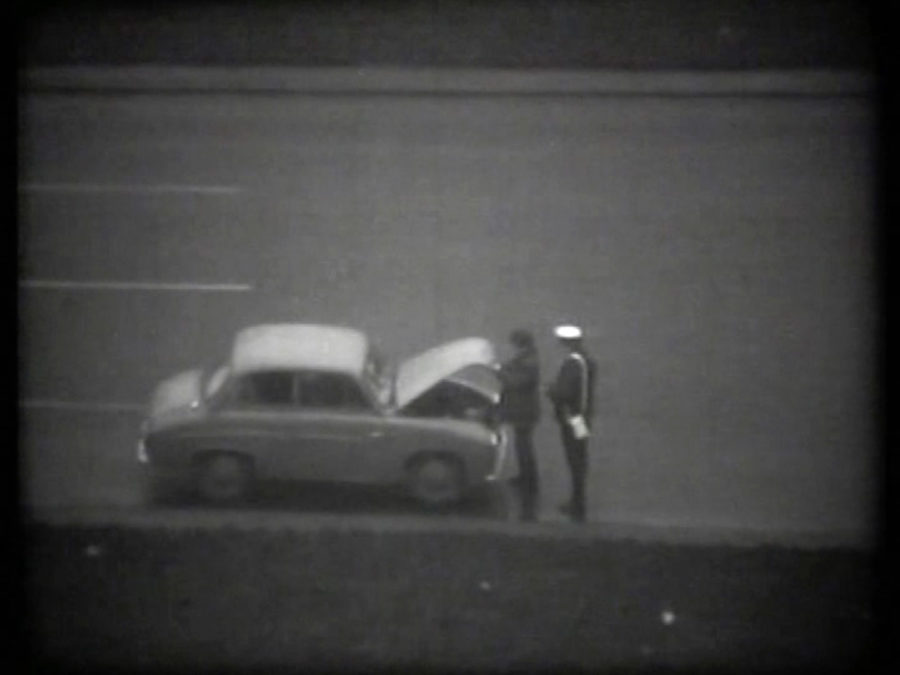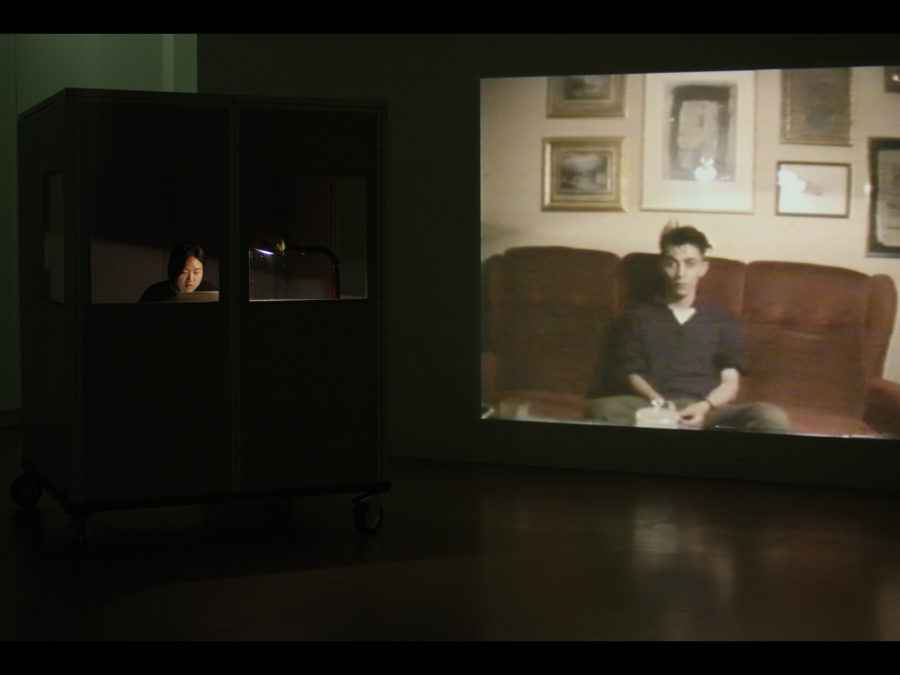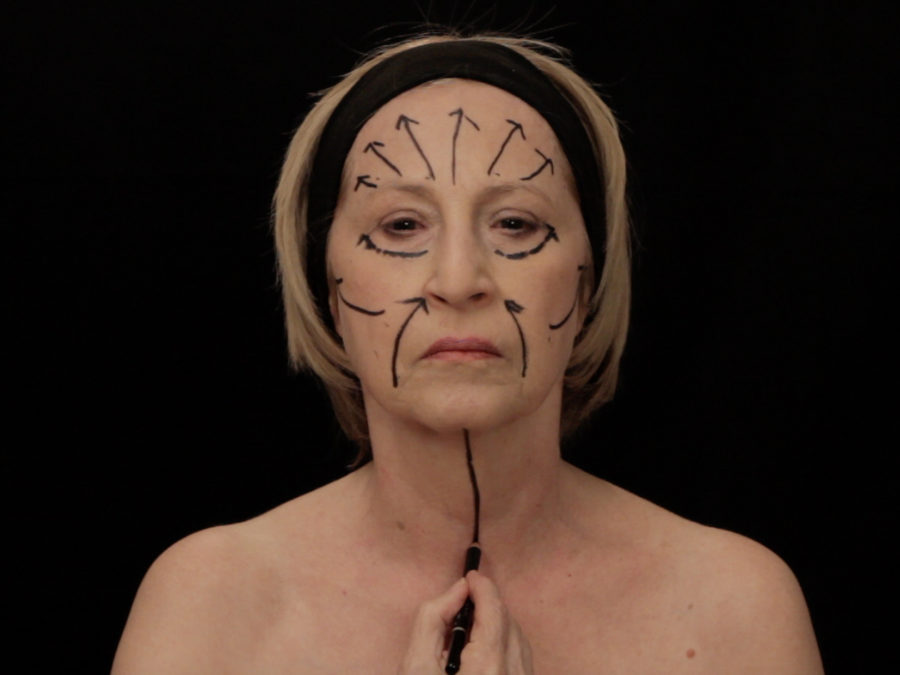For Guilty without Guilt. Trap. Expulsion from Paradise was created specifically as a two-part work for the public space in Vilnius. The first part, Net, involved a net woven out of women’s hair that stretched out between two buildings in the former Jewish ghetto in Vilnius. The second part entitled Trap. Expulsion from Paradise was a live sculpture in which Rakė formed another net by attaching the braids of thirteen teenage girls together. Since 1996 the work has also been shown in different locations in Europe.
In the video For Guilty without Guilt. Trap. Expulsion from Paradise (1996), young girls stand in a circle with their backs to each other, bound together by their long plaited hair. They wear long white dresses inspired by the holy communion under dark coats. They stand still as if the slightest movement might affect them all. The girls’ interconnectedness reflects their restricted mobility due to social constraints, religion, and patriarchy – as a condition that renders the personal daily life political. After several minutes, a few of them take scissors, cut themselves loose, and leave the stage, walking off in different directions.
In this critical view of the 1990s, different layers interact: the deep-rootedness of Christianity throughout the changing political systems and its effects on female identities, the transition from child- to adulthood, and the condensed experience of ritualistic silence and physical dependence. Several years after Lithuania’s re-establishment as an independent state in 1990, Rakė regenerates the perpetual ‘feeling of being in transition.’
Eglė Rakauskaitė / Rakė chooses various means of expression, creating objects, sculpture, performances, installation, video, photography, painting, and public art. She is currently preparing an artist book and a personal retrospective at the National Gallery of Art in Vilnius for 2020.
